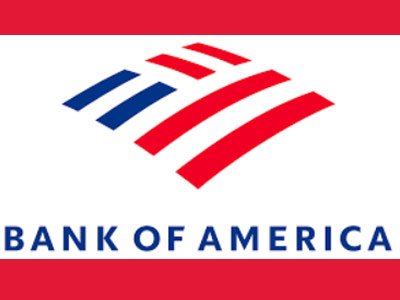How to Qualify for an FHA Loan with Wells Fargo: A Complete Guide for First-Time Buyers
Discover the essential steps to secure an FHA loan through Wells Fargo and make your homeownership dream a reality.
Navigate the FHA loan process with Wells Fargo confidently—expert tips for first-time buyers.
Many people face financial challenges that can feel overwhelming, especially when unexpected expenses arise or when managing day-to-day budgets gets tough.
Feeling stressed about money and unsure where to turn for help is more common than you might think. Luckily, understanding personal loans and how to navigate the process can provide relief and a clear path forward.
Let’s explore the essential steps to secure a personal loan successfully and confidently.
Table of Contents
- Understanding What a Personal Loan Is
- Assessing Your Financial Needs and Budget
- Checking Your Credit Score and Creditworthiness
- Comparing Loan Options and Interest Rates
- Preparing Your Documentation
- Applying for the Personal Loan
- Managing Your Loan Responsibly After Approval
Getting a personal loan can be a vital solution to your financial worries, but it’s important to approach the process the right way. This article will guide you through each step with clarity and ease, helping you avoid common pitfalls and find shortcuts to a smooth approval. You’ll gain practical knowledge, tips, and resources to empower your financial decisions.
Understanding What a Personal Loan Is
A personal loan is an unsecured loan that you can use for almost any purpose, whether it’s consolidating debt, covering emergency expenses, or funding a big purchase. Unlike a mortgage or auto loan, it doesn’t require collateral. This flexibility makes personal loans a popular choice for many.
However, because they’re unsecured, lenders rely heavily on your creditworthiness and income to decide whether to approve you. Understanding the basics of how interest rates work and the terms involved will prepare you to negotiate better deals and avoid costly mistakes.
Step confidently toward your next milestone with the support of a Bank of America Loan. Flexible loans available from $2,500.Bank of America Loan
There are fixed-rate and variable-rate personal loans. Fixed-rate loans maintain the same interest rate throughout the term, making monthly payments predictable. Variable rates can fluctuate, which might reduce payments if rates drop but could also increase them, adding risk.
Loan amounts typically range from $1,000 to $50,000 or more, depending on your credit and the lender’s policies. Terms usually span from 12 to 60 months, with longer terms lowering monthly payments but resulting in higher overall interest costs.
Before applying, it’s essential to understand how your monthly budget will accommodate the loan payments and what the total cost of borrowing will be over time.
Leveraging personal loans responsibly can greatly improve your financial health, but mismanagement can lead to deeper debt issues. Knowledge is your first line of defense.
Assessing Your Financial Needs and Budget
Before diving into loan applications, take a clear and honest look at why you need the money and how much you actually require. It’s tempting to borrow more than necessary, but this often backfires.
Start by listing your expenses or planned purchases and determine the exact amount needed. This ensures you’re borrowing just enough, keeping repayment manageable.
Next, carefully review your monthly income and fixed expenses to see how much you can comfortably allocate toward loan payments without causing additional financial stress.
Maintaining a cushion in your budget for unexpected costs is crucial to avoid falling behind on payments.
Tools like budget calculators or apps can help visualize your cash flow and loan affordability.
Setting a realistic loan amount based on this assessment will help you avoid overextension and protect your credit score.
Checking Your Credit Score and Creditworthiness
Your credit score plays a major role in personal loan approval and the interest rate you’re offered. A higher score usually unlocks better terms and more borrowing power.
Obtain a free credit report from trusted services to review your score and the detailed information that influences it. Look out for any errors or outdated items that could be lowered your score unfairly.
Understanding factors like payment history, credit utilization, and outstanding debts can help you identify areas to improve before applying.
If your score is lower than desired, take time to pay down debts, avoid opening new credit lines, and ensure all payments are on time to increase your chances of approval.
Remember, each loan application can lead to a small dip in your score, so apply only after you’ve prepared.
By managing your credit proactively, you empower yourself to access loans with favorable rates and terms.
Comparing Loan Options and Interest Rates
Once you know your borrowing needs and credit standing, start comparing loan offers from various lenders. Look beyond just interest rates: check fees, repayment terms, penalties, and customer reviews.
Online lending platforms, banks, credit unions, and peer-to-peer lenders all offer personal loans but differ widely in conditions and eligibility.
Be aware of the difference between APR (annual percentage rate), which includes fees, and the nominal interest rate, to judge the true cost of the loan.
Watch for loans advertising very low rates that come with hidden fees or strict penalties for early repayment.
Choose lenders with good reputations and transparent terms to avoid surprises.
Taking the time to shop around can save you hundreds or even thousands of dollars over the life of a loan.
Preparing Your Documentation
Gathering the required documents ahead of time can speed up the loan approval process and improve your chances.
Typically, lenders ask for proof of identity (such as a driver’s license), proof of income (pay stubs or tax returns), employment verification, and residence details.
Having bank statements and a list of your monthly expenses ready enables you to substantiate your financial stability.
Organizing everything neatly will make the process more efficient and demonstrate to lenders that you’re serious and reliable.
If self-employed, prepare business financials and tax returns as well.
Ensure all documents are up-to-date to prevent delays.
Applying for the Personal Loan
With your research and paperwork ready, you’re set to apply. Many lenders provide online applications that are quick and convenient.
Fill out the forms carefully, double-checking your information to avoid mistakes.
Authorize credit checks with understanding that it will affect your score slightly.
Some lenders offer prequalification tools allowing you to see estimated rates without a hard credit pull — use these to narrow your best options.
If approved, review loan agreements thoroughly before signing, noting payment schedules, interest calculations, and any fees.
Ask questions if anything is unclear and ensure you’re comfortable with repayment obligations.
Managing Your Loan Responsibly After Approval
Once your loan funds arrive, use them only for the intended purpose to maximize benefit and avoid spiraling debt.
Set up automatic payments if possible to avoid late fees and protect your credit.
Track your repayment progress regularly to stay motivated and on target.
If financial hardship arises, communicate with your lender promptly about possible payment accommodations.
Paying off your loan early can save on interest, but confirm there are no prepayment penalties before doing so.
Responsible loan management builds a solid credit history and opens doors for future financial opportunities.
If you want to learn more about personal loans tailored to your needs, check these helpful resources:
Personal Loan at Bank of America
Conclusion
By understanding personal loans, assessing your needs properly, checking your credit, comparing lenders, preparing documents, applying carefully, and managing your loan responsibly, you can take control of your financial future with confidence. This step-by-step approach reduces stress and increases your chances of finding a loan that fits your life perfectly. Now that you have this insight, why not explore more about financial planning or another type of loan that suits your goals? Taking action today sets you on the path to financial wellness.

Easily Calculate Your Loan Interest with Our Free Tool
Understanding how much interest you’ll pay on a loan doesn’t have to be complicated. With our free loan interest calculator, you can estimate your total interest, monthly payments, and overall cost in just a few clicks—no spreadsheets, no confusion.

U.S. Bank Personal Loans from $1,000: What You Need to Know
Finding the right loan in the U.S. can feel overwhelming, especially when you’re uncertain about loan amounts or worried about approval. Many people face the challenge of choosing a loan that fits their financial needs without stretching their budget or risking their credit scores.

Citibank Personal Loans: How to Apply and What to Expect
Feeling overwhelmed by unexpected expenses or dreaming of upgrading your lifestyle but falling short on funds is a common struggle. Many people find themselves wondering how to access quick, reliable financial help without the hassle.
